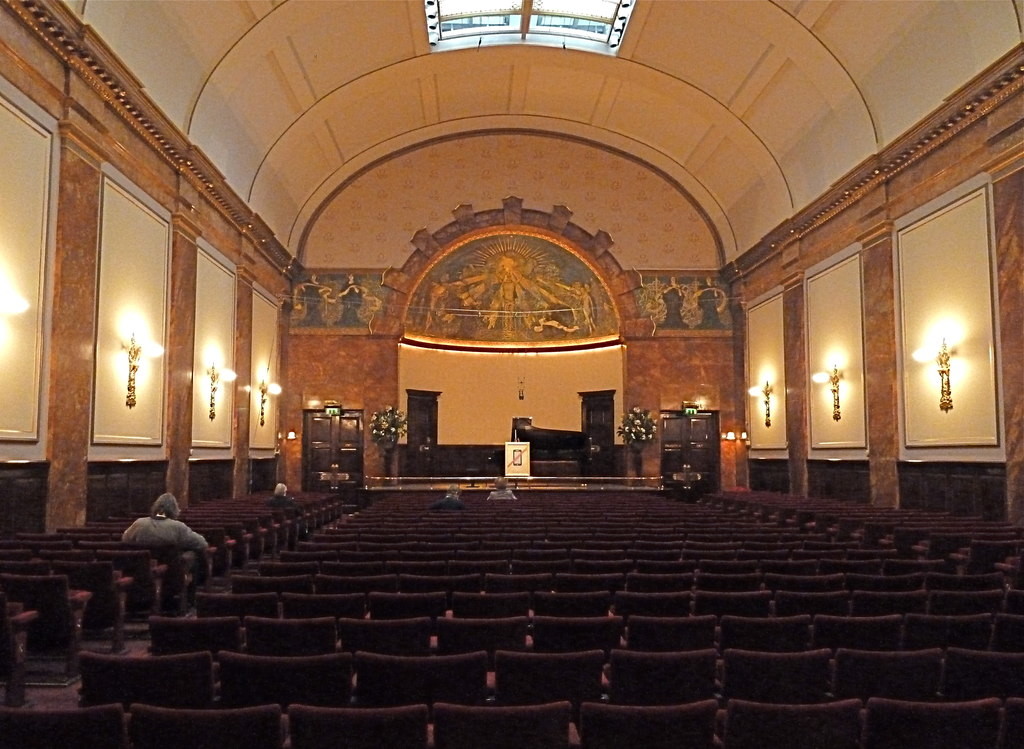Buried treasure
In the midst of a flurry of Schubert, a broadcast on Medici TV and the general celebratory noises emanating from the Wigmore Hall last week as they reach their 115th birthday, you could be forgiven for having missed something which (to this music researcher, anyway) is more exciting than all of these things put together. For with a few rather bland tweets and not even a website news item to mark its arrival, the Wigmore has done something quite amazing. It has made available, free and online, just shy of 100 programmes from its first fifteen years. And my goodness, what programmes they are.
I have deliberately refrained from calling them concert programmes, since concerts were certainly not the only events being held at the hall during this period. John Buchan makes several appearances in 1915, discussing the progress of the First World War; and the introductory text also mentions that ‘Shakespeare lectures, interpretative dance, recitals in historical costume and marionette theatre’ are to be found among the archive boxes. Among the musicians are the likes of Caruso, Myra Hess, George Enescu, Leopold Godowsky, Scriabin, Ravel, Brahms contemporaries such as the clarinettist Richard Mühlfeld… on and on the list goes, rich and varied and quite extraordinary in its starry personnel. And these are just SOME of the programmes from the first fifteen years.

© Copyright Anthony O’Neil and licensed for reuse under this Creative Commons Licence
Around the time I was completing my PhD, I had the great privelege and joy to work with the vast concert programme collections of the Royal College of Music. Week after week, I and my colleagues would sit at a desk with a mountain of donated programmes – from venues all over the world, and across great stretches of time – and sort them. First we would sort them by country, then by city, by venue, and by date. For most major UK venues, the RCM had a fairly well-stocked run of programmes, into which we would then integrate our sorted piles, removing duplicates and seeking out interesting annotations. (The right concert-goer will provide you with everything from running times and encore details to sarcastic comments about boring performers and out-of-date translations.) If you’re thinking that this would be tedious and repetitive, I can assure that nothing could be further from the truth. Never did I learn so much so quickly, across such a broad range of subjects, as I did when I was sorting and boxing up those programmes. They are so very much more than just a list of repertoire – although that is, in and of itself, often fascinating. You learn about artist collaborations; changing styles of biography; changing approaches to publicity shots (including clothing and hairstyles); anticipated audiences through the tone of the notes (or lack of them) and adverts; printing trends; ticket prices; agencies; the evolving shapes of the concert seasons… on and on it goes. They are tiny treasure troves of social history, every single one of them.
And the Wigmore was always among the most interesting because of its curious history. Built as a glamorous addition to the Bechstein piano company building which stood next door, its days as the Bechstein Hall were numbered thanks to the outbreak of war and thus the sale of all stock and buildings, including the hall itself. Reopened as the Wigmore Hall a few years later, it then functioned for many decades as a hire venue – and this explains its magical, checkerwork programming. Ibbs and Tillett might be booking the hard hitters one day, but Mrs So-and-So’s piano students would be using it for a class concert the next. And then someone might stop by to give a talk on spiritualism. And then Isolde Menges. And so it went on.
Above all, looking at the Wigmore’s past programmes reminds us of the miscellaneous and often charming juxtapositions that can occur either within a single evening (check out the opening concerts of 1901 for some particularly fine examples) or within a season, when a venue is available for hire. Whilst I’m not suggesting that the hall looks to running regular pupils’ concerts and spiritualist evenings, it was certainly a welcome respite, in sorting the Wigmore run at the RCM, to come across the innovative and flexible programming of The Songmaker’s Almanac and the Nash Ensemble in the 1970s. The miscellany approach of the early years may seem odd to us now, but if carefully managed its effect must have been quite something – particularly given the calibre of the arts performing side by side.
So there is much to read, and see, and learn on these new webpages, even given the relatively small percentage of concerts so far added. What strikes me as very sad is that the hall itself has not seen fit jump up and down and tell us all about them in a way that might actually get people excited about it. Simply put, these things are seriously cool. They are worth it for the handlebar moustaches alone, for goodness sake. The archive is a place and a task left to the seriously dedicated, the usually part-time, and in some cases the volunteer in many organisations. This is a major tragedy – not because we should have people to Collect And Preserve The Greatness Of This Place, but because concerts are (like it or not) entertainment, concert halls are places of community and friendships both on the stage and among the audiences, and they are full of stories that are personal as well as artistic. They have a lot to tell us, and we should celebrate that. Music is an amazing thing that is made by humans, for humans. It is for all of us to learn and tell and celebrate its stories. And so I can only hope that the Wigmore, and its many friends, sponsors, attendees and researchers start spreading the word. This online archive is truly something to celebrate.
